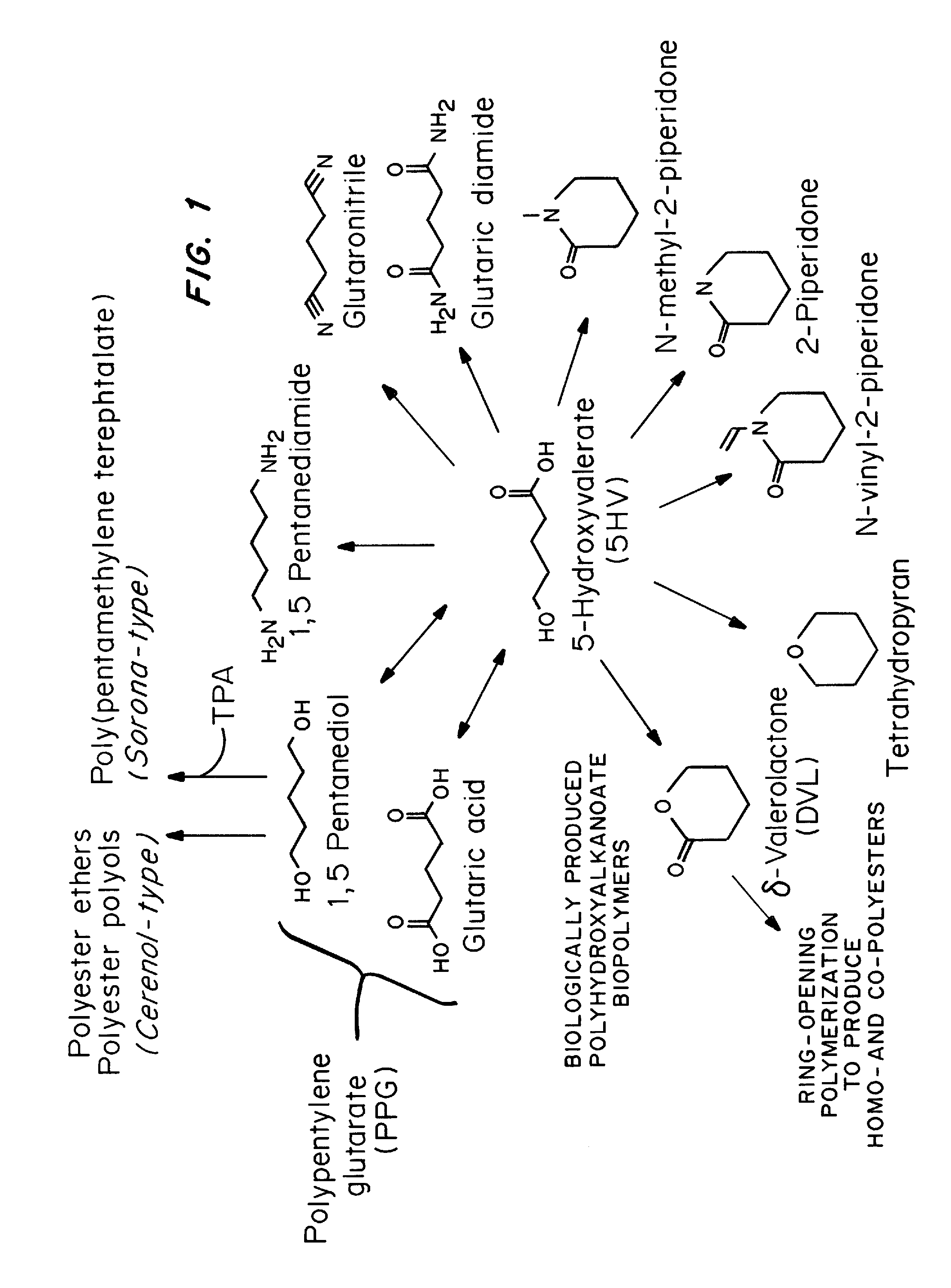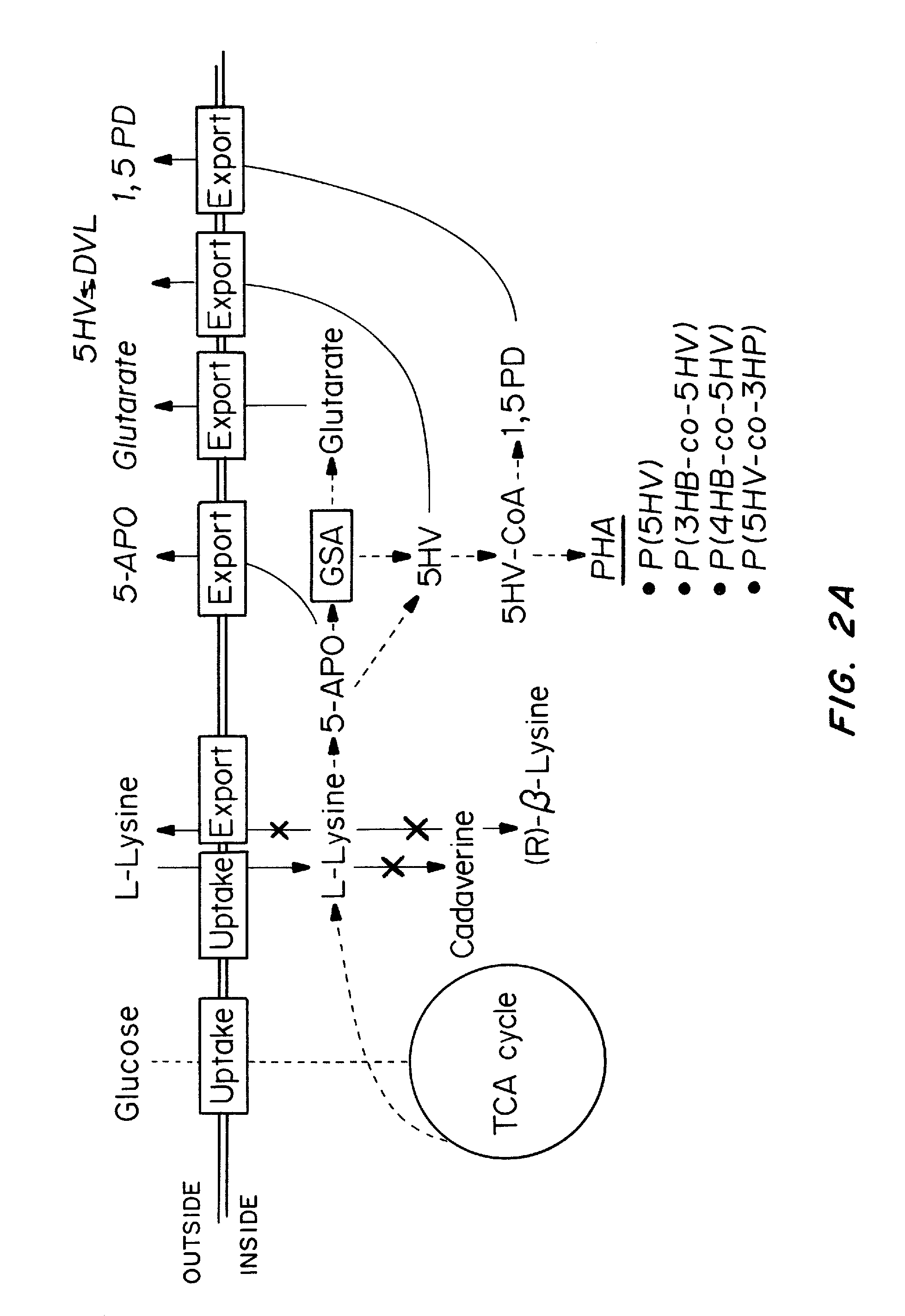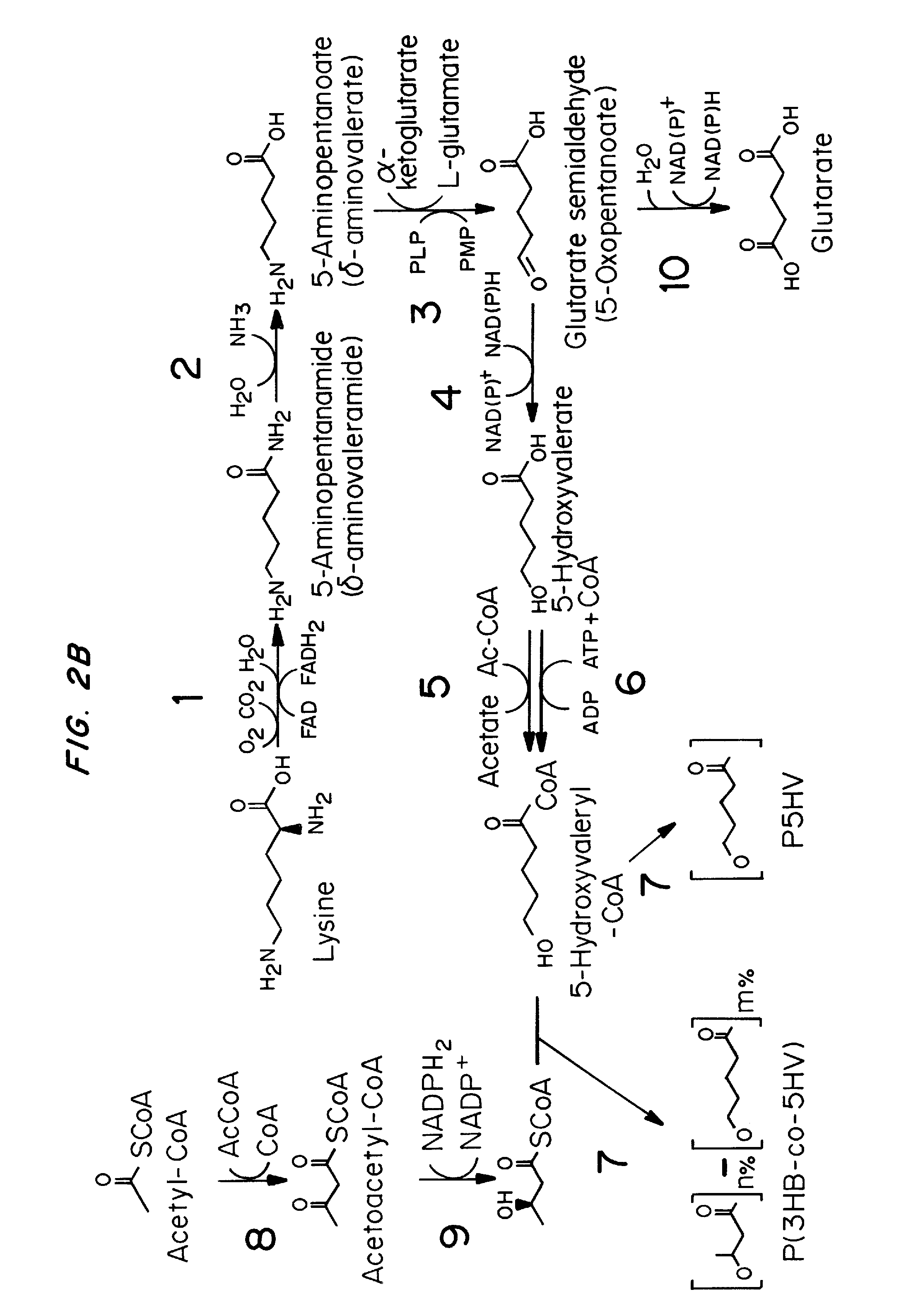Green process and compositions for producing poly(5HV) and 5 carbon chemicals
a technology of poly(5hv) and 5 carbon, applied in the field of transgenic organisms, can solve the problems of only partly making phb5hv and p5hv polymers produced by these methods from renewable resources and high cos
- Summary
- Abstract
- Description
- Claims
- Application Information
AI Technical Summary
Benefits of technology
Problems solved by technology
Method used
Image
Examples
example 1
Biosynthesis of P(5HV) Homopolymer from Sodium 5-hydroxyvalerate
[0083]As a first demonstration of the ability to synthesize 5HV-containing PHAs, sodium 5-hydroxyvalerate (Na5HV) was fed to E. coli strains expressing both a CoA transferase or CoA synthetase and a PHA synthase, in order to determine if the fed 5HV monomer would be accepted and incorporated directly into P(5HV) homopolymer. Na5HV was synthesized via base hydrolysis of 8-valerolactone (DVL). This procedure involved adding 0.1 mol NaOH to 50 mL methanol with stirring until dissolved. To this, 0.1 mol DVL was added with vigorous stirring. The resulting precipitate was dried, dissolved in water, pH-adjusted to 8.5, and filter-sterilized with a 0.2 μM filter. Analysis of the salt solution was performed on a Waters Alliance HPLC in order to confirm that all of the DVL had been saponified.
[0084]Different combinations of CoA transferase / synthetase and PHA synthase genes were tested in order to find the best combination suitabl...
example 2
Biosynthesis of P(3HB-co-5HV) Copolymer from Sodium 5-hydroxyvalerate
[0095]The next experiment was to demonstrate the production of P(3HB-co-5HV) copolymer in an E. coli strain capable of synthesizing the 3HB-CoA and 5HV-CoA monomers and incorporating them into PHA.
Strain Construction
[0096]The strain used in this example was MBX2641, which is an MG1655 derivative that contains an operon consisting of R. eutropha H16 bktB-B. megaterium phaB-kan randomly integrated into the chromosome. To carry out the operon integration, strain S17-1λpir (Miller and Mekalanos, J. Bacteria. 170(6):2575-2583 (1988)) containing pCJ022 (described below) was mated with MBX1987, which is a nalidixic acid-resistant mutant of MG1655, using a protocol taken from the literature (De Lorenzo and Timmis, Methods Enzymol. 235:386-405 (1994)). Derivatives of MBX1987 carrying the bktB-phaB-kan cassette in the chromosome were selected on LB plates containing 30 μg / mL nalidixic acid (N1) and 50 μg / mL kanamycin (Km). O...
example 3
Tunable 5HV Monomer Composition in P(3HB-co-5HV) Copolymer and Effect on Material Properties
[0102]The copolymer composition was modulated by altering the amounts of Na5HV and glucose added to the production medium. Alternate ways to accomplish this include (1) feeding different amounts of L-lysine to the growth medium to a recombinant cell that can produce 5HV from L-lysine as is shown in Example 6, or (2) deregulating L-lysine pathway genes in recombinant cells that can produce 5HV from glucose via L-lysine as shown in Example 9 and 10.
[0103]To demonstrate tunable 5HV monomer composition in P(3HB-co-5HV) copolymer, strain MBX2641 [pFS30] was used that expresses the enzymes for the 3HB pathway (bktB and phaB) in addition to the CoA-transferase (orfZ) and PHA synthase (phaC). Parallel cultures of MBX2641 [PFS30] were grown in either decreasing concentrations of glucose (10, 5, 1, 0.5, 0.1, 0 g / L) or Na5HV (10, 5, 1, 0.5, 0.1, 0 g / L) and analyzed for polymer content as described in Ex...
PUM
| Property | Measurement | Unit |
|---|---|---|
| Vickers hardness | aaaaa | aaaaa |
| Volume | aaaaa | aaaaa |
| Volume | aaaaa | aaaaa |
Abstract
Description
Claims
Application Information
 Login to View More
Login to View More - R&D
- Intellectual Property
- Life Sciences
- Materials
- Tech Scout
- Unparalleled Data Quality
- Higher Quality Content
- 60% Fewer Hallucinations
Browse by: Latest US Patents, China's latest patents, Technical Efficacy Thesaurus, Application Domain, Technology Topic, Popular Technical Reports.
© 2025 PatSnap. All rights reserved.Legal|Privacy policy|Modern Slavery Act Transparency Statement|Sitemap|About US| Contact US: help@patsnap.com



